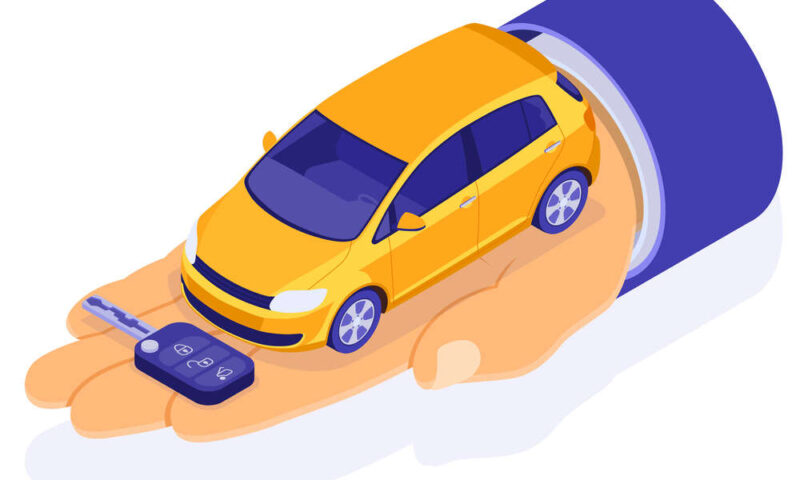
How Public-Private Partnerships Helped a Vehicle Group Take on Disruption at Full Speed
The American Association of Motor Vehicle Administrators uses a collaborative approach to helping members—many of whom are public-sector regulators—digest innovation so it meets the needs of companies and consumers alike.
Maybe you’ve seen the ads on TV, or you’re close to one of the 33 Carvana Vehicle Vending Machines throughout the United States. They’re a leading indicator of a fundamental shift in auto sales that includes Carvana, Vroom, and other digital-first platforms.
At a time, the innovations of these startups threatened to catch the industry off guard, according to Paul Steier, the director of vehicle programs for the American Association of Motor Vehicle Administrators (AAMVA).
“We knew from a regulatory standpoint and from laws and rules that we need to help our members get up to speed with how commerce moves today,” he said.
This was partly because the standards for titles and licensing used by AAMVA’s members, largely auto regulators who work at state-level organizations, were built for a pre-internet era, which didn’t anticipate the needs of companies like Carvana or TrueCar.
Rather than stand in the way of this innovation, AAMVA has taken steps to support the growth of internet-based sales, creating a working group on the topic in 2014 and a guide for administering internet vehicle sales, released in 2019. During that time, Carvana grew from a fledgling startup to a publicly traded company.
Laying Out the Process
The guide was built over several years and examines ways to manage and preserve records, as well as the significant differences between online sales and in-person approaches. One in particular stood out, according to Steier.
“One of the big areas was often requirements for having vehicles displayed on a lot, physically, at your location,” he said.
AAMVA’s recommendations allow exceptions from the traditional display rules that still allow car buyers to go to a specific location to inspect and otherwise manage their vehicles before purchase. Other important factors in the guide include ways to track records, manage vehicle titles and other ownership documents, and complete a sale.
“The public is buying probably the second or first most expensive thing that they will ever purchase,” Steier said. “They need to know that it’s a legitimate, bona fide business somewhere that they can actually talk with somebody.”
While not hard-and-fast regulations, they do represent recommendations that the broader industry can work with when building state and federal regulations.
Balancing the Needs of Stakeholders
Steier emphasized that when it came to internet-based sales, it was important to ensure that needs were being met throughout the dealer ecosystem—particularly given the regional role that many of AAMVA’s members play.
“You want to make sure that their needs are met and that they’re getting what they need so they can be competitive in the markets,” he said.
But the addition of internet-based sales creates a new dynamic for consumers as well, who want a more timely, more efficient buying model.
“The jurisdictions are feeling that pull between the standard traditional dealer model versus the internet sales model, and they know that they need to really support both models because the public has a say, too,” he said.
AAMVA’s role in this discussion is to bring all these stakeholders together to meet the needs of the entire industry.
“We can sit down with various organizations, companies, and kind of gather a national perspective that we can share with all of our members to help bridge some of the challenges,” Steier said, noting that the association visited Carvana’s headquarters earlier this year.
Lessons for Associations
AAMVA was able to arrive at a strong solution because of its focus on the day-to-day needs of members—something Steier says was true even when he was a state-level jurisdiction member with the Iowa Department of Transportation.
“Many kinds of associations have their focus on lobbying efforts or legislative efforts or higher-level-type issues,” he said. “AAMVA has been one that, for as long as I can recall, has been very in tune with the day-to-day challenges of motor vehicle agencies and law enforcement and of all the different stakeholders that we interact with.”
That, he said, has created an opportunity to get a stronger handle on issues emerging around innovation, allowing direct work with stakeholders to build stronger standards through cooperation.
“We want that harmony to be together, and that’s what we really provide that maybe other associations don’t get so deep into,” Steier said.
It’s in this spirit that the association is taking on its next big challenge—electronic titles (e-titles), which are likely to help the automotive sector in a big way moving forward. (There’s a working group for that initiative, too.) While being mindful of the issues of fraud and criminal activity that make titles important, he says that this process, like any other, is intended to meet the goals of dealers and consumers alike.
“It’s not something that’s going to happen overnight, but we have to keep helping move that needle to make this process meet the needs of what the consumers are demanding,” he said.
(LisLud/iStock/Getty Images Plus)






Comments